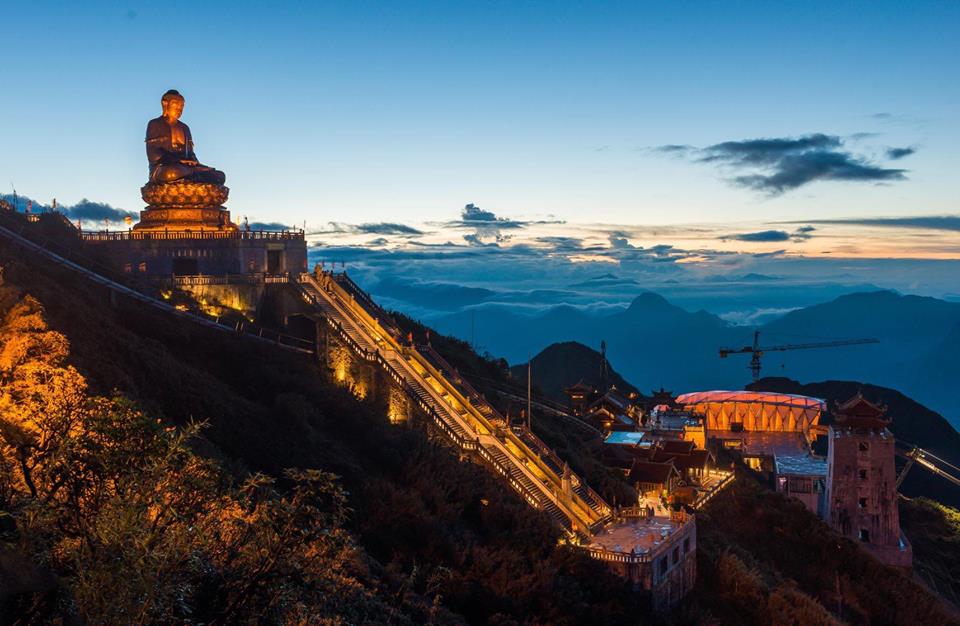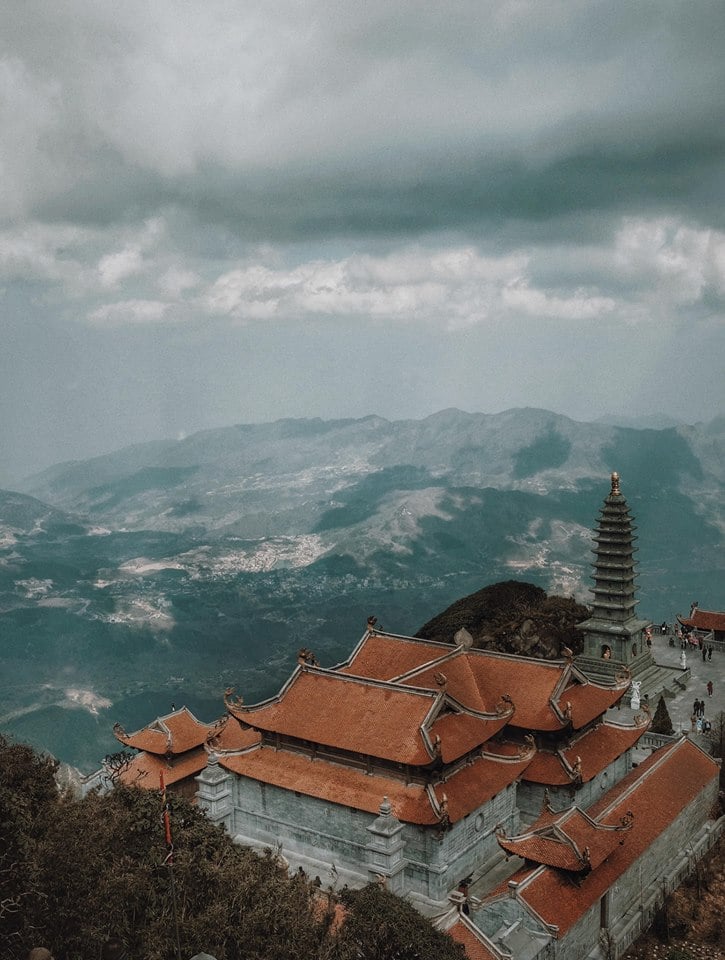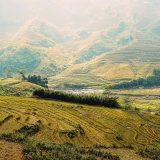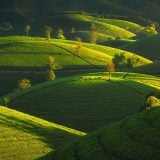Sapa
GENERAL KNOWLEDGE
Backpacking Sapa is what you couldnt miss when comes to Vietnam. Sapa is a small mountainous town of Lao Cai Province, which is located about 350 km northwest of Hanoi and sharing border with China. It’s here where you’ll find the Hoang Lien Son range of mountains, which includes Fan Si Pan—the country’s highest peak. It includes one of the most scenic regions of Northern Vietnm, and worldwide famous for it’s rice terraces with sweeping mountain vistas.
- Minorities: Hmong, Dao, Tay, Giay and Xa Pho
VISA
Many travelers require a visa to travel to Vietnam, or at very least a pre-paid E-Visa. Make sure that you check your visa requirements before you travel.
THE BEST TIME BACKPACKING SAPA
From September to mid-December, the weather is perfect for sightseeing, photo-taking and camping trips, making it one of two best times to drop by Sapa. During this period the temperature ranges from 15 – 25 degree Celsius. It is not rainy season in Sapa so the trekking routes are dry and bear which means added opportunity to do longer treks, and possibly conquer Mount Fansipan. During the winter months, the temperature is much cooler are periods of light rain and heavy fog. This puts Sapa in the clouds and allows for some fantastic photo opportunities.
The wet season lasts for around 3 months, from June to September, and it is not a wise choice paying for Sapa tours at that time. The period from June to September also coincides with high domestic season so you may expect to see more Kinh than other ethnic minorities.
Sapa Weather In Brief:
- March – May: perfect weather – warm and dry – for trekking and outdoors activities
- June – September: rainy weather and crowded with Vietnamese tourists
- Late – September – mid- December: cool dry weather – perfect for photos and trekking
- Mid-December – February: harsh winter but few tourists – perfect for people watching
CULTURE & HIGHLIGHT SPOTS
With its mist-covered mountains, colorful local tribes-people and the faint but undeniable feel, it’s pretty easy to find reasons to visit Sapa. If you still haven’t made up your mind for a journey to Sapa, here comes some highlight spots of Sapa may make you think of:
Trek and visit fascinating tribal villages

Tribal trekking is commonplace in Sapa wherein visitors are guided through the many villages to immerse in authentic cultural experiences, enjoy local cuisine and surround themselves with the beautiful folds of rice terraces. If you are keen on traversing the cultures and traditions of the tribal groups, this experience will provide a hands-on and unmediated experience, contrary to merely visiting landmarks and points of interests. To engage in a more fulfilling immersion, you can trek the villages in the day and spend the night at a local home, then continue your journey the very next day!
Sapa’s Picturesque Setting
The town of Sapa has a picture-postcard setting, located in a valley with a small lake and surrounded by majestic mountains often enchantingly blanketed in mist. A room with a view is a must here so you can take in the changes to the vistas, especially how the clouds mesmerize with their continual flow into the valley and over the hills. When the clouds and mist decide to clear off, the views of the surrounding mountains are simply jaw-dropping.
Fansipan
Mount Fanispan is Vietnam’s highest mountain at 10,311 feet and is a challenge for many visitors come to conquer. It’s not mountain climbing per se, just very hard trekking in often wet and miserable conditions. The trek is usually done over three days, and if you get lucky you’ll have the most magnificent vistas in Vietnam to enjoy. If not, at least you can say you did it. Be sure to do this trek with a guide as they know the local weather conditions and will enrich your trek and keep it safe.
Local handicraft
There are tons of items you can buy, from bracelets, anklets and headbands to scarves, jewelry, handbags, shoes and carpets – each with embroidery intricately sown with love and care. The colors and patterns on the items represent the different tribes of people, and it is interesting to figure out which is which. Don’t be afraid to let your curiosity get the best of you. Talk to the women and find out. Not only do these items make for great souvenirs for yourself, but your loved ones at home will adore them too. Sapa Market is full of stalls with colorful displays, and it’s sure you will not come out empty handed.
Drop by the Sapa Love Market

This is a unique experience in Sapa, and only happens on Saturdays. The Sapa Love Market is where young ethnic tribes people would come to meet one another, fall in love, and get married.You will see boys and girls hanging out, laughing, drinking, eating, doing traditional dances and playing traditional games together. It’s a different world to what we are used to. At the end of the day they part ways but promise to meet again, probably in a week, when the market comes to life again.
Check out 10-Day journey around incredible Northern Vietnam
FOOD
Thang Co (Thắng cổ)
Thang Co is the traditional food of Hmoong people and it has been cooked for hundreds years. Thang Co is a type of soup which is made of horsemeat, horse’s viscera and horse’s bone. The seasonings comprises of 12 spices from cardamon, ginger, citronella, anise to cinnamon twig. The locals stew horsemeat with these 12 spices in a big pot within a couple of hours. To elevate the flavor of Thang Co soup, they serve it with fresh vegetable and a special red hot pepper name Muong Khuong.
Bamboo sticky rice (Cơm lam)
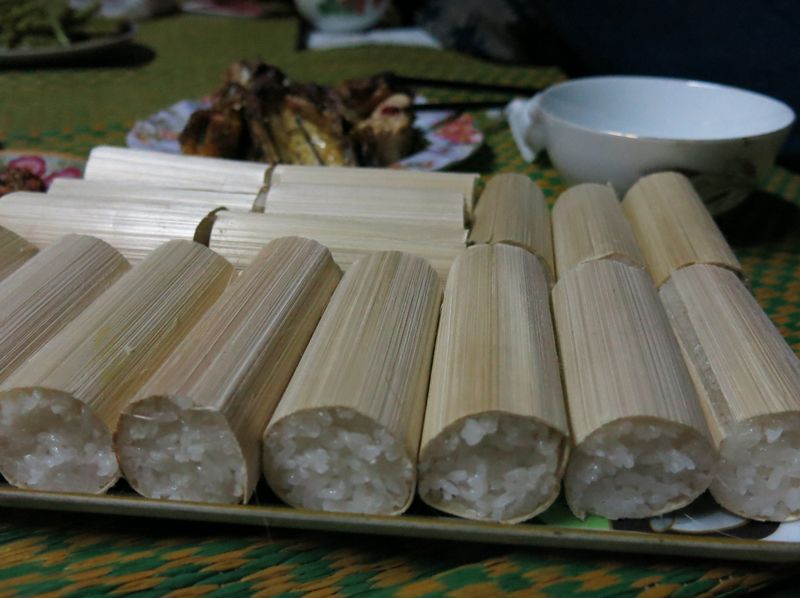
Photo by: Khanh Hien
Bamboo sticky rice in Sapa is an abnormal version of rice. To make it more special, it is absolutely cooked in bamboo sections. The locals mix rice with a little bit of salt then stuffing up bamboo with salty rice. The signature secret here is that you need to resolve the bamboo sections while grilling. There will be a huge miss if you still not try bamboo sticky rice before leaving Sapa.
Corn wine
Sapa Corn wine is not opaque but it has the clear color like water. It owns a very characteristic aroma of Lung Phinh corn. Drinking too much Bac Ha corn wine can make you drunk but it does not cause headaches, dizziness or nausea. If using an adequate amount of corn wine, you will be much healthier because it is used to stimulate the activity of the neural system, enhance blood circulation and stimulate gastrointestinal activity.
Backpackers Vietnam
Date: Jul 1st, 2019
12/06/2019



